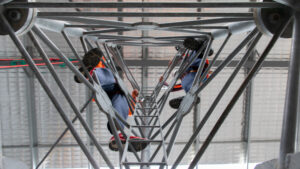What happens at a recertification inspection? Matthew Hatton dons a harness and climbs a roof to find out.
I am going to admit straight off the bat that heights and I have an uneasy relationship. Planes and office towers are fine, I like the view. But places where it becomes a bit too easy to see yourself succumbing to the will of gravity? That is less fun.
Which is why, of course, I got a job working at a height safety company. Height safety is one of those things that you do not tend to think about if you are not in it. You understand there must be something but the details are never considered.
Basically, height safety is about not suffering a grave injury if you fall off a roof.
There are a couple of ways you can do this. Obviously, the safest way being not going up on the tall thing in the first place. Of course, if we could solve all problems like that, we would not need the hierarchy of controls.
One of the most common ways is the use of what is creatively referred to as a height safety system.
What is a height safety system?
A height safety system could be just about anything. Scaffolding is a height safety system. So are balcony rails. In this circumstance we are talking about items including anchor points, static lines, ladders and walkways.
Australian standards require a system recertification inspection occur at least every 12 months. Following that inspection, it is either signed off as compliant or not. If not, a detailed report recommends rectification work to complete.
So how do these inspections work? What checks are there? I wanted to find out
This is how I came to find myself at an undisclosed location in suburban Sydney trying to remember how a harness works. I was with Ben – one of our lead recertification inspectors – to find out what a site inspection involves.
First item on the agenda: a bit of a briefing. This only takes a minute.
As I am not actually performing the inspection, I am very keen to keep out the way. The suggestion that sticking to the installed walkway would be a wise idea is one I am happy to receive. I should also stay at least two metres away from the edge. Too easy.
Ben gets to work. The roof is not exactly small, so it takes some time to work his way around the litany of anchors. He checks each to ensure the installation is solid. There should not be any corrosion, the fixtures should be in good condition.
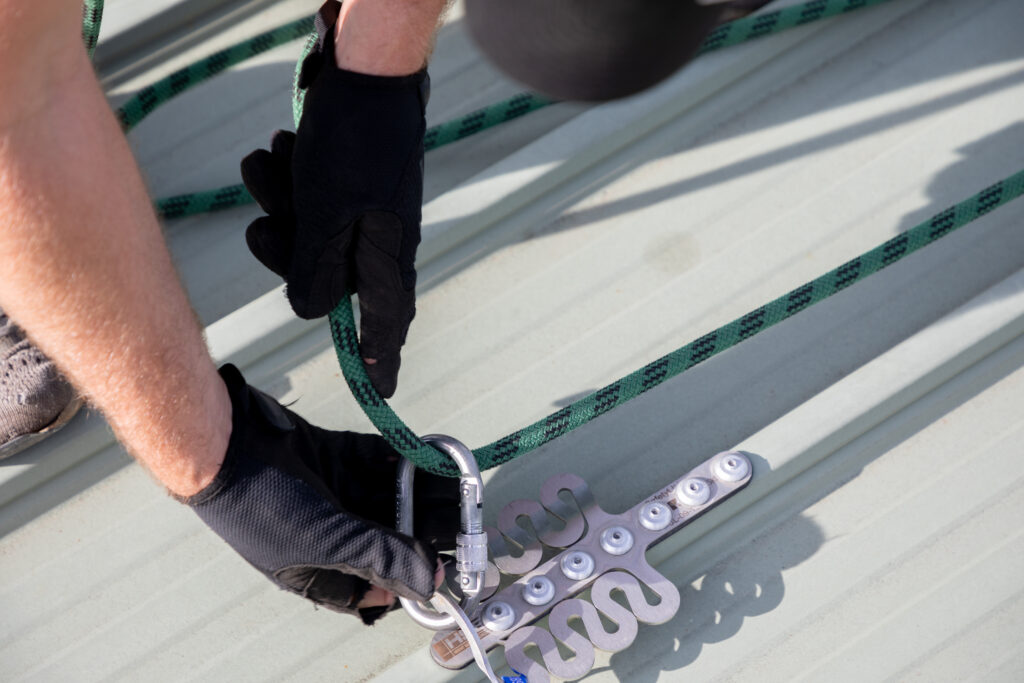
While this is going on, Ben is also checking the layout of anchors. This is to make sure that fall distances are all ok.
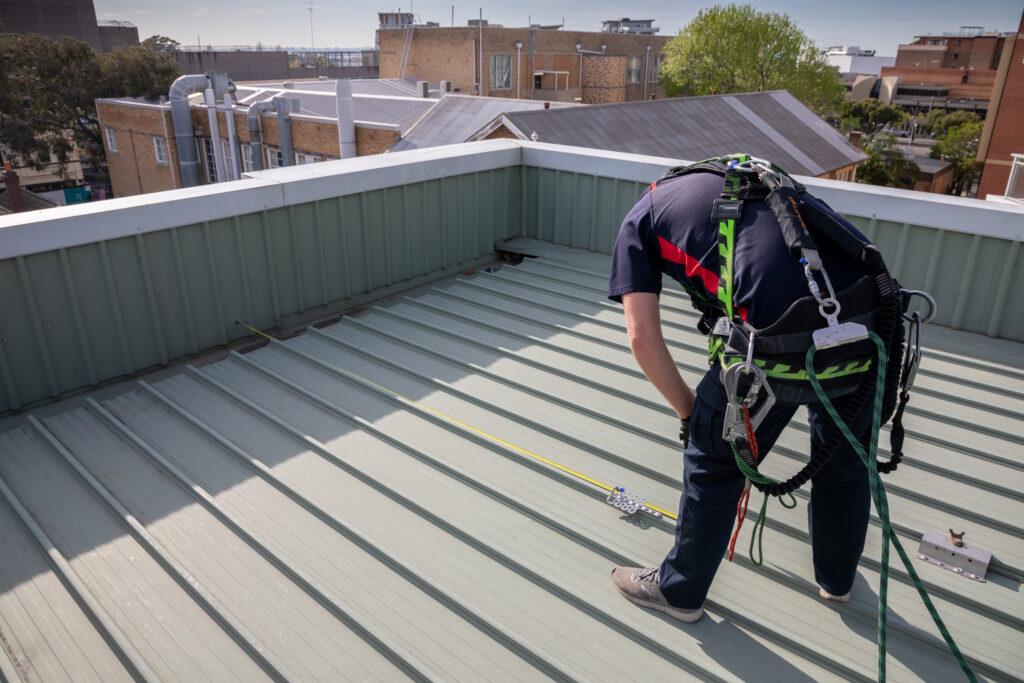
Our attention then turns to some recently installed stairs and access platform. These have replaced a rotting, wooden set that had posed a safety risk.
The check involves making sure the spacing on the steps is correct. Ben also measures the heights between steps to make sure they are what they should be. He also looks at the how everything connects to the roof and walls. They need to be solid and not compromised or corroded.
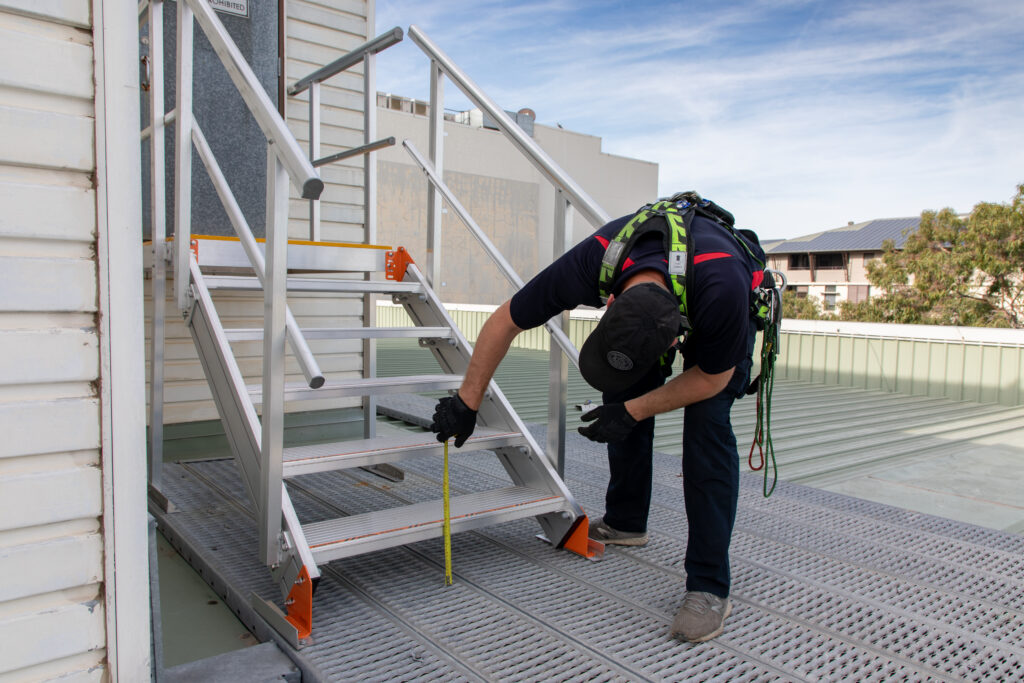
New on the roof since the last site inspection are cooling tower access platform and ladder system. These allow safe and easy access to the top of the cooling tower for regular maintenance.
Like the stairs, Ben checks the foundations and structure for problems. He then ascends the ladder to inspect the platform itself. Space up there is a little restricted, so I opt to stay at the bottom and out of the way. It is a small space and awkward maneuvering feels like a bad idea.
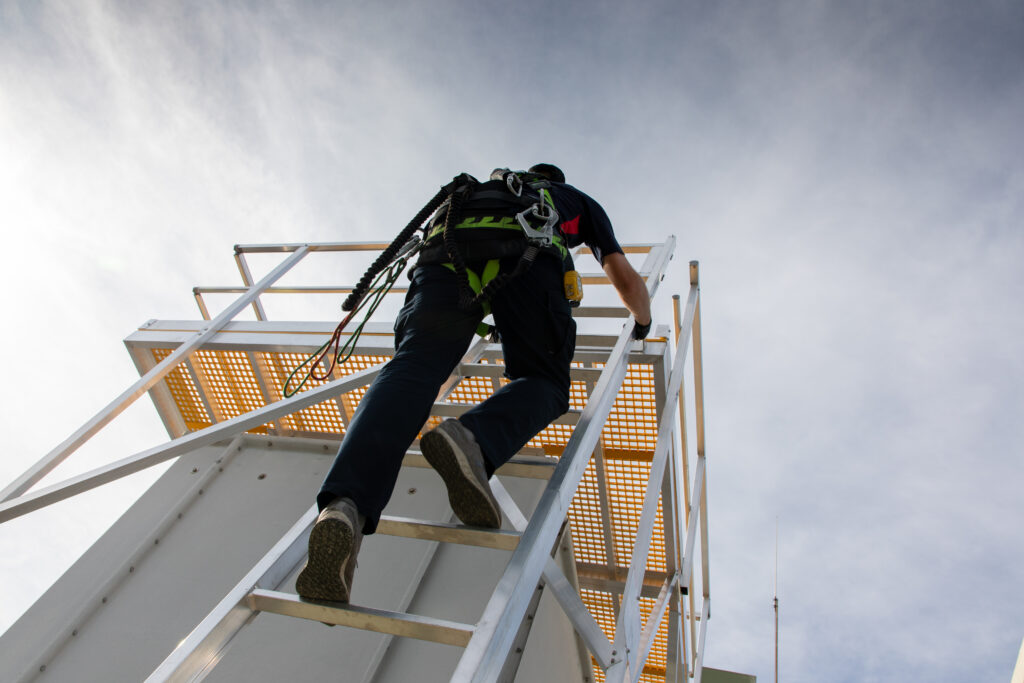
The final two items on the list for checking are a couple of ladder brackets, first-man up cables, and anchor points on top of the elevator shaft.
Ladder brackets allow a step ladder to be firmly secured to the edge of the roof allowing safe access.
The first man up cable is a fixed line accessible while you are still on the ladder. It allows you to safely transfer from the ladder to the roof while maintaining fall protection. As they are a permanent roof fixture, they are steel as opposed to rope.
Inspection of the ladder bracket looks for corrosion and that its fixing points are not damaged. Ben also makes sure that generally it is firmly in place.
Checking the first man up cable involves making sure it is free from rust and damage. Its fixture to the anchor point is also inspected to ensure it is firm. Ben also makes sure the cable’s eyelet is in good condition.
During the inspection, Ben takes a lot of photos. The photos form part of the record of the inspection. He will be able to refer to them to check measurements and observations. Photos would also form part of any report detailing issues with the system.
With the checks complete, Ben updates the compliance plate. The compliance plate’s location is next to the ladder bracket. It placed to be visible to those about to use the height safety system.
The plate has details of the system installed on the roof and its limitations as well as a log of inspections. This allows a worker to assess what equipment they may need to use the system in the correct manner. It also gives a quick sign of whether the system is compliant and has been recently inspected.

Gear collected and access latched closed it is back inside, down in the lift and into the car park. Gear stored away, Ben pulls out a pad and fills in the post-inspection paperwork for the site.
The paperwork, plus the photos, will be used back in the office to form the record against which the compliance certificate will be issued.
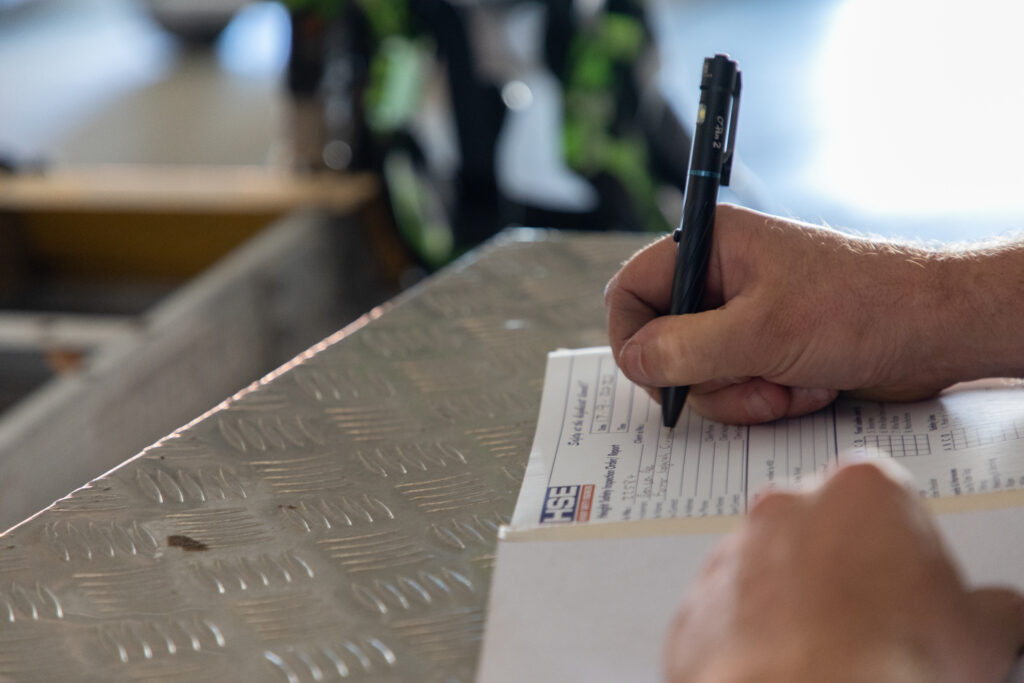
Today’s inspection did not uncover any problems with the anchors, platforms and other items installed on the roof. This is not always the case. The recent work on the roof has rendered the system compliant.
Recertification inspections are a simple way to keep your height safety system – however simple or complex – in good working order. Best practice workplace safety is a priceless asset to have and re-certification inspections are one cost-effective tool of maintaining that at your site.
Is your workplace due for a recertification inspection? Talk to the experts at HSE
We are proud to be industry leaders in the ongoing compliance of installed height safety and roof access systems. We are NATA accredited for compliance with ISO/IEC 17020 and have the broadest accredited in the Australian height safety industry.



